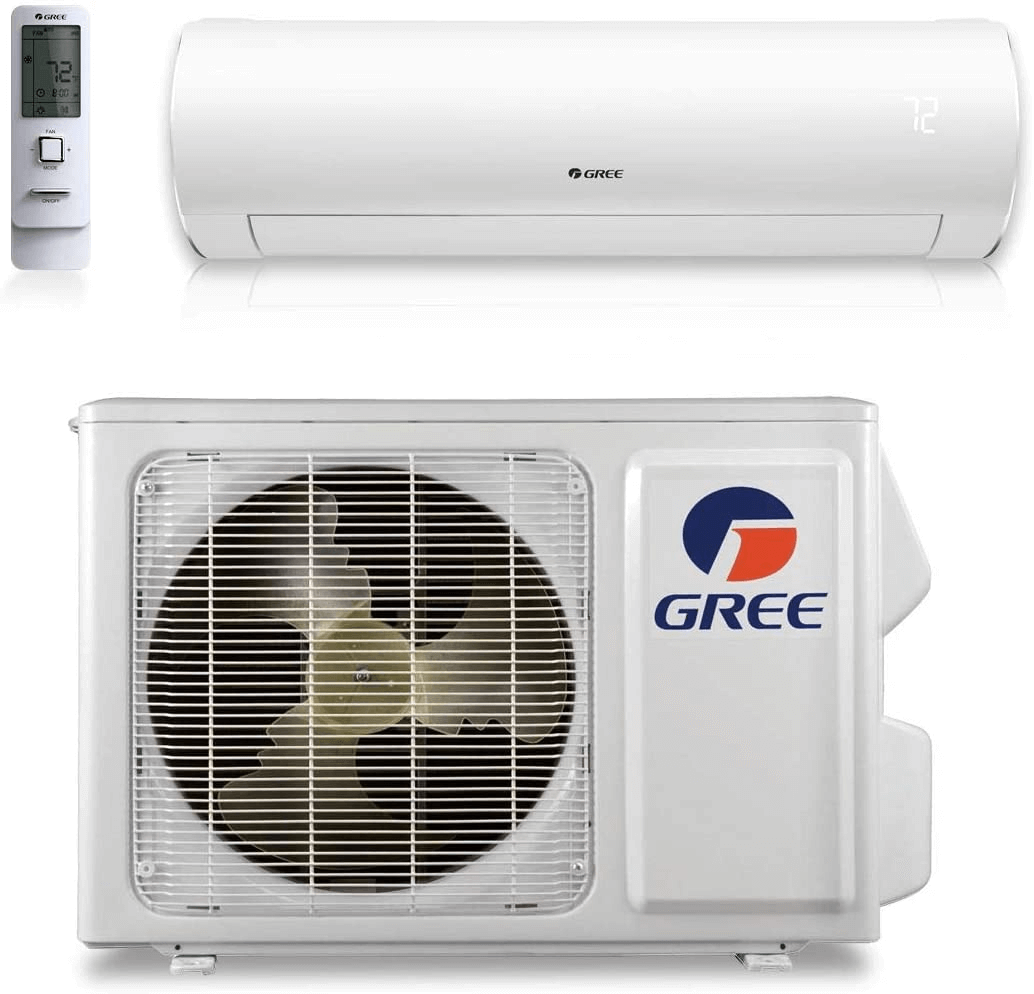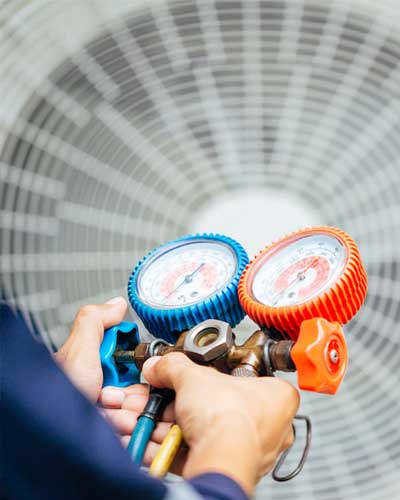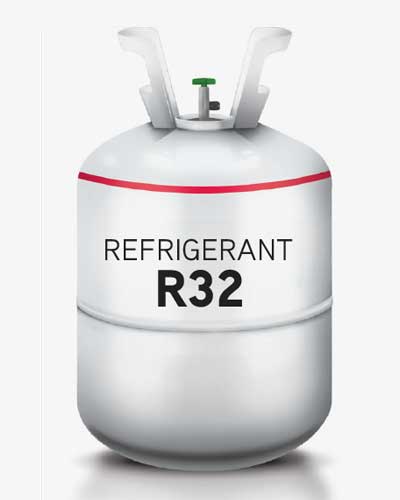
Adding Mini-Splits to an Existing HVAC System: A Guide for Contractors and Owners
For a long time, the HVAC industry relied on central air conditioning systems and furnaces as the most energy-efficient and budget-friendly solution for temperature regulation in residential and commercial spaces. However, technology is constantly evolving. And in the world of air conditioning, mini-split systems are gaining popularity as a more flexible and efficient answer to cooling and heating residences and commercial buildings alike.
Unlike central air conditioning systems, a mini-split air conditioner operates without ductwork. This makes mini-split system expansion significantly easier and more straightforward than expanding a ducted HVAC system.
Advantages of a Mini-Split System over Central Air Conditioning
Increasing the capacity of a mini-split system is a simple process because the installation does not require the placement of new ducts and vents. Extending the reach of a traditional HVAC system not only requires extending the ductwork, you may need an entirely new central unit depending on how much-increased area you need to cover. This ease of installation is only the first of many reasons why many contractors and their clients opt for mini-split systems over a central air conditioning setup.
Some additional advantages of having a mini-split system for heating and cooling requirements include the following:
Decrease in Energy Use and Lower Energy Bills
After installation costs, users will find that mini-split systems yield savings through their reduced energy consumption.
Energy Star, a consumer education platform run by the US Department of Energy, states that mini-split systems use up to 30% less energy than conventional ACs for a multitude of reasons. For a start, mini-split systems can heat and cool separate zones independently, saving substantial energy compared to central ac systems which provide air conditioning to an entire home all at once regardless of which zones need it.
Mini-Split Efficiency in Heating Mode:
Heat pumps are versatile and energy-efficient HVAC systems designed to provide both heating and cooling for residential and commercial spaces. Heat pumps work based on the process of heat transfer by moving heat from one location to another, instead of generating heat through fuel combustion (which takes much more energy.) When temperatures are low, heat pumps use refrigerant to absorb heat from the outdoor air and transfer it indoors by taking advantage of the natural tendency of heat to flow from high to low-temperature areas. During the warmer months, heat pumps work in reverse and use the refrigerant to extract heat from your space and expel it outside. This dual functionality helps heat pumps provide energy-efficient climate control all year round. Lastly, mini-split systems are ductless, making them, even more, energy efficient than traditional furnace systems, as they don’t lose any heat through leaky ductwork.
Mini-Split Efficiency in Cooling Mode:
All air conditioning systems use the principle of heat transfer to remove heat from your indoor space and transfer it outside when temperatures are hot. However, traditional HVAC systems are generally either “fully on” or “fully off”, which is inherently very inefficient for energy consumption. GREE mini-splits, on the other hand, use inverter system technology, which uses a variable-speed compressor that can ramp up or slow down as needed. This inverter system allows your mini-split to work harder when temperatures are either very cold or very hot, or work less when temperatures are mild, allowing them to adjust their output to match your exact needs. Inverter systems help you save both energy and money. Mini-split inverter heat pumps also integrate sophisticated sensors that continually survey the surrounding conditions. This allows the system to adjust its output as needed, ensuring optimal efficiency and comfort.
Flexible Solutions
Mini-split systems are also ideal for complicated layouts or sites that require different temperatures in different areas, as this can be accomplished through separately controlled zones. Because connecting additional indoor units to a mini-split system is relatively simple, their distribution can be customized to maximize effectiveness for the existing layout.
Simple Maintenance
Along with being easy to install, mini-split ACs are also easy to maintain. Cleaning filters and replacing refrigerant is much simpler than maintaining an extensive network of ducts and vents.
Better Temperature Regulation
Mini-split systems can easily heat and cool a home or commercial space. This dual functionality makes them a one-stop solution for temperature regulation, eliminating the need for a combination of heating and cooling systems.
Types of Mini-Split Air Conditioning Systems
Before we dive into how to go about increasing the capacity of an existing mini-split system, let’s briefly cover its components.
Mini-split ACs have two main elements that are installed separately, which is what gives them their name. These are:
- The Indoor Air Handler: Contains the evaporator and blower that distribute airflow
- The Outdoor Unit: Contains the compressor and conductor and delivers cool air to the indoor unit
These two units are connected through a conduit. This conduit itself comprises three parts:
- Refrigerant line
- Power cable
- Drain line
Within this basic configuration, there are two main types of mini-split systems that can be set up, single-zone mini-split systems and multi-zone mini-split systems
Multi-Zone Mini-Split Systems
This system comprises two or more indoor units connected to one outdoor unit. The actual number of units will depend on the square footage of the space, the number of zones, or rooms, that require heating and cooling, capacity of the outdoor units chosen for the system, and the layout of the space. A multi-zone mini-split system is recommended when clients have multiple areas that require heating and cooling, as they allow for each zone to be temperature controlled independently.
Single-Zone Mini-Split Systems
Single-zone systems only control the temperature for one area in a space (or the entire space if it is small), and typically have one outdoor unit per indoor unit. Single-zone mini-split systems are easy to install and are great for projects that don’t need flexible cooling solutions for different zones. Some applications could include small studio condos with one main room, which could receive total temperature control from one single zone system. Another use-case could be providing cooling to a critical area of a larger space such as a guest room or master bedroom, in a home that otherwise has no AC. A very common use case is adding a single-zone mini-split to a home that already has a central AC system in the attic, basement and a shed in the backyard.
Adding Single-Zone Mini-Splits to Existing Central AC Systems:
Adding a single-zone mini-split to an existing central AC system can be an energy-efficient way to supplement heating and cooling in a specific area. This is especially beneficial in homes or commercial spaces with hot or cold spots. It's like having a personal thermostat for each room! Some scenarios where you'd add a single zone mini-split system to an existing central ac system include when a room is frequently used and requires constant cooling, in rooms with large windows that lead to temperature imbalances such as sunrooms, or for spaces that weren't included in the original ductwork like a garage, a recently finished basement, or a new home addition. In commercial spaces, it's common to add mini-splits to retail or restaurant spaces in old buildings that didn't require cooling at the time of construction but do now due to rising temperatures. It's not about replacing your central AC but enhancing it, giving you more control over your space's comfort level.
Installation Considerations for Adding Single Zone Mini-splits to Existing Central AC Systems:
When considering adding a single-zone mini-split to a space with an existing central AC system, there are some items you'll want to keep in mind. Compatibility shouldn't be a concern if you are adding the system to a space that currently has no AC, as the single zone will be controlled independently from the rest of the system. However, if the area does receive heating and cooling from the existing system, and the mini-split is being added as additional capacity, the output for the original system should be considered when selecting the mini-split. Additionally, you'll want to keep electrical capacity in mind. It is crucial to ensure that the existing wiring and circuitry can support the added load of the mini-split system add something about how smaller units (9k and 12k) are available in 115v whereas the larger sizes will require access to 208/230 voltage. Also, remember to factor in the physical space required for the mini-split, both for the indoor and outdoor units. Understanding these aspects can save you from unexpected hiccups during the installation process.
Adding Zones to an Existing Mini-Split System
One of the features that makes mini-split systems so convenient to upgrade is the flexibility to add zones when needed. For example, your client recently had you install a mini-split system in their master bedroom. Now, they’re so happy with the results that they want to bring the rest of the house’s cooling needs under the mini-split system. In such a scenario, adding new zones to a mini-split system is much simpler than restructuring a central air conditioning system. The latter requires extensive labor and new ducts, whereas adding more mini-splits are comparatively easy to install, assuming the outdoor unit has a multizone configuration.
The process of adding zones to an existing mini-split system depends on whether it is a single-zone or multi-zone system.
Adding Zones to Single-Zone Mini-Split Systems
Having a single-zone mini-split system does not preclude you from expanding to a bigger system. The need for expanding an existing single-zone system could occur when renovating a small home includes creating an additional room, the construction of a home extension, or when you simply need cooling where you didn't before. The beauty of mini-splits is their flexibility.
Installation Considerations for Adding Zones to a Single-Zone Mini-Split System:
If you're starting with a single-zone, you can add an additional zone by simply installing a second single-zone system with both an indoor and outdoor unit. However, if you want to add more than one additional zone, or if you think you may want to in the future, you should consider adding a multi-zone system to work in conjunction with the original zone. Eventually, the cost of adding single-zone systems will outpace the cost of adding a multi-zone system. Moreover, multizone systems can run multiple zones from one outdoor unit, reducing the room needed outside for outdoor units.
Can You Add More Indoor Air Handlers to a Single Zone System?
The short answer is that it depends on the system you're using. Some single-zone outdoor units may be able to power multiple air handlers if they are cooling the same space. However, remember that they will both be controlled as one zone, it's not recommended to have one zone powering separate rooms as there are many variables that could lead to them having differing temperatures.
Adding to Multi-Zone Mini-Split Systems
Multi-zone mini-split systems are designed to cover multiple zones within a space. Depending on the manufacturer’s specifications, a single outdoor unit can be connected to as many as 10 indoor units in a multi-zone mini-split system. If your outdoor unit still has additional capacity, installing new zones to a multi-zone mini-split system simply involves identifying the new zone, placing the indoor unit, and then connecting it to the outdoor compressor.
That said, you shouldn't assume that you'll be able to add 3-4 new zones to your existing outdoor unit. It wouldn't be prudent for a contractor to recommend an installing outdoor unit capable of handling 10 zones when 4 will do for cooling a space, as issues can arise from oversizing. If for some reason you need to add many new zones to your space, it's likely that you'll need an additional outdoor unit along with the indoor units.
Installation Considerations for Expanding Existing Multi-Zone Mini-Splits:
When expanding an existing multi-zone mini-split system, three main considerations arise: the capacity of the current outdoor unit, the compatibility of the indoor units, and the overall system configuration. The outdoor unit's capacity must be sufficient to handle the added load, and the new indoor unit must be compatible with the existing ones and the outdoor unit.
Not only will you need to make sure the configuration allows for effective air distribution, you also need to make sure you have the appropriate number of outdoor units based on the layout of the space. GREE's multi-zone systems are designed to efficiently link multiple indoor units to one outdoor unit. However, the physical layout and size of an installation can sometimes introduce challenges. If the distance between an indoor and an outdoor unit is too great, it might impede the speed of the refrigerant traveling between units, making the system less efficient, not to mention the increased amount of copper needed to complete the run lengths. In these cases, adding another outdoor unit can be a practical choice. Lastly, when it comes to buildings and spaces where constant operation is vital, such as in school classrooms, the proper ratio of indoor to outdoor units can change. For such mission-critical applications, system redundancy becomes paramount. In these scenarios, opting for a 1:1 system ratio, where each indoor unit pairs directly with its outdoor counterpart, is often the most reliable approach.
As we've explored, the world of mini-split systems is ripe with possibilities for both homeowners and contractors. From their impressive energy efficiency to their unmatched flexibility, mini-splits present an exciting and effective solution for the evolving heating and cooling needs of modern spaces. Whether you're looking to supplement an existing central AC system, add comfort to a new home addition, or seeking an efficient solution for a multi-room property, expanding with mini-splits gives you the power to customize your comfort in a way traditional systems simply can't match.
For contractors and HVAC professionals, the easy installation, minimal maintenance, and happy customers make expanding with mini-split systems a rewarding job. The key lies in understanding the unique needs of each space and selecting the right mini-split system to fulfill them. With a little planning, a little knowledge, and the right tools, the potential of mini-splits is vast.
At GREE, we're committed to providing you with the resources, systems, and support you need to make the most of this opportunity. We encourage you to use our System Builder tool, a user-friendly platform designed to help you select the best mini-split configuration for any space. From defining zones to calculating BTU needs, our System Builder makes the process seamless and accurate.
In case you have any queries or run into any issues, our extensive FAQs and troubleshooting guides are always at your disposal. Your success is our success, and we're here to support you every step of the way. With GREE Comfort and our ductless mini-split systems, you have a partner ready to help you deliver exceptional comfort, efficiency, and satisfaction to your clients.





